1st Generation of K-Pop Explained: 1992-2002
1st Generation of K-Pop Explained: 1992-2002
The 1st generation of K-Pop, spanning from 1992 to 2002, represents a transformative period in South Korea's music industry. This era laid the foundation for the global phenomenon that K-Pop has become today. We'll explore when the 1st generation started and finished, what defines it, the emergence of K-Pop, the first K-Pop girl group and boy group, the influence of the Big 3 agencies, and the notable bands that belong to this pioneering generation.
Check out article for a brief overview of the 4 Generations of K-Pop Explained.
When Did the 1st Generation Begin and End?
The 1st generation of K-Pop is generally recognized to have started in 1992 with the debut of Seo Taiji and Boys and concluded around 2002. This decade marked the advent of modern Korean pop music, characterized by a blend of Western music styles and Korean culture.
The Beginning: 1992
The inception of the 1st generation of K-Pop is attributed to the debut of Seo Taiji and Boys in 1992. Their groundbreaking single, "I Know," revolutionized the Korean music industry by introducing rap and modern dance elements, which were relatively new to Korean audiences. Seo Taiji and Boys' success demonstrated the potential of blending different music genres and set the stage for future K-Pop artists.
The End: 2002
The conclusion of the 1st generation around 2002 coincides with significant transitions within the industry. Many pioneering groups disbanded or experienced declining popularity, making way for new artists and groups that would define the 2nd generation of K-Pop. This period of transition also saw advancements in production techniques, distribution methods, and the international reach of K-Pop.
What Defines the 1st Generation?
The 1st generation of K-Pop is defined by several key characteristics that set it apart from previous and subsequent generations:
Musical Innovation
The 1st generation of K-Pop was marked by musical experimentation and innovation. Artists and groups incorporated various genres such as hip-hop, rock, dance, and R&B into their music, creating a unique sound that resonated with the youth. This era saw the introduction of rap, synchronized dance routines, and elaborate music videos as standard elements of K-Pop.
Emergence of Idol Groups
A defining feature of the 1st generation was the emergence of idol groups, carefully selected and trained by entertainment agencies. These groups were designed to appeal to a broad audience through a combination of music, dance, and visual appeal. The concept of the "idol" became a central aspect of K-Pop, emphasizing a wholesome image, multifaceted talent, and strong fan engagement.
Fan Culture
The 1st generation also witnessed the rise of a dedicated fan culture. Fan clubs played a crucial role in promoting artists and fostering a sense of community among fans. This period saw the beginning of organized fan activities, including fan meetings, fan chants, and coordinated support during performances.
The Emergence of K-Pop
The emergence of K-Pop as a distinct genre can be traced back to the success of Seo Taiji and Boys. Their innovative approach to music, combining Western influences with Korean lyrics and themes, set a new precedent for the industry.
Seo Taiji and Boys
Seo Taiji and Boys, consisting of Seo Taiji, Yang Hyun-suk, and Lee Juno, debuted in 1992 with their single "I Know." The group's fusion of rap, rock, and dance music with socially conscious lyrics resonated with Korean youth. Their debut album topped the charts and sold millions of copies, proving the commercial viability of this new music style.
The success of Seo Taiji and Boys inspired other artists and groups to explore similar musical directions. Their influence extended beyond music, impacting fashion, dance, and youth culture in Korea.
Rise of Idol Groups
Following the success of Seo Taiji and Boys, the mid-1990s saw the rise of idol groups. Entertainment agencies began to form and train groups, focusing on creating well-rounded performers who could sing, dance, and connect with fans. This period marked the beginning of the idol training system, where aspiring artists underwent rigorous training in singing, dancing, and public speaking.
The First K-Pop Girl Group and Boy Group
The 1st generation of K-Pop saw the debut of several iconic groups, but two stand out as pioneers: S.E.S. and H.O.T.
The First K-Pop Girl Group: S.E.S.
S.E.S., formed by SM Entertainment in 1997, is considered the first successful K-Pop girl group. The group consisted of members Bada, Eugene, and Shoo. S.E.S. set the template for future girl groups with their polished image, catchy music, and engaging performances.
Debut and Success
S.E.S. debuted with the album "I'm Your Girl," featuring hit tracks like "I'm
Your Girl" and "Oh, My Love." Their fresh and wholesome image, combined with their talent, quickly won them a large fanbase. S.E.S.' success demonstrated the commercial potential of girl groups in the K-Pop industry.
Influence and Legacy
S.E.S. paved the way for future girl groups by proving that female idols could achieve substantial success. Their influence is evident in the music, fashion, and performance styles of subsequent K-Pop girl groups. S.E.S.' legacy continues to be celebrated in the K-Pop industry, and they are often credited as the pioneers of the girl group concept in Korea.
The First K-Pop Boy Group: H.O.T.
H.O.T., formed by SM Entertainment in 1996, is widely recognized as the first successful K-Pop boy group. The group consisted of members Moon Hee-joon, Jang Woo-hyuk, Tony An, Kangta, and Lee Jae-won. H.O.T. became an instant sensation with their debut album, "We Hate All Kinds of Violence," which addressed social issues and resonated with the youth.
Debut and Impact
H.O.T. debuted in 1996 and quickly captured the hearts of fans with their energetic performances and socially conscious lyrics. Their debut album sold over 1.5 million copies, establishing them as one of the most popular groups in Korea.
Influence and Legacy
H.O.T.'s immense popularity set the stage for future boy groups. Their success highlighted the importance of rigorous training, strong stage presence, and a well-crafted image. H.O.T. also played a significant role in shaping the fan culture in K-Pop, with their dedicated fanbase actively supporting the group through various activities.
The Influence of the Big 3 Agencies
The "Big 3" entertainment agencies—SM Entertainment, YG Entertainment, and JYP Entertainment—played a pivotal role in shaping the 1st generation of K-Pop. These agencies pioneered the training and management systems that are now standard in the industry.
SM Entertainment
Founded by Lee Soo-man in 1989, SM Entertainment was instrumental in the development of K-Pop. The agency's structured training programs,
emphasis on high production values, and strategic marketing helped propel groups like H.O.T., S.E.S., and Shinhwa to fame. SM Entertainment's success set a blueprint for future K-Pop agencies.
Key Groups
-
H.O.T.: As the first successful K-Pop boy group, H.O.T. paved the way for future generations.
-
S.E.S.: The first successful K-Pop girl group, S.E.S. set the standard for female idol groups.
-
Shinhwa: Debuting in 1998, Shinhwa became one of the longest-running K-Pop groups, known for their consistent success and evolution.
YG Entertainment

Established by Yang Hyun-suk in 1996, YG Entertainment initially focused on hip-hop and R&B. The agency's first major success came with the boy group Jinusean
and later with 1TYM. YG Entertainment distinguished itself with a focus on artist individuality and creative freedom, contributing to the diversity of the K-Pop soundscape.
Key Groups
-
Jinusean: One of YG's first successful acts, Jinusean brought hip-hop to the forefront of Korean music.
-
1TYM: Known for their strong hip-hop influence, 1TYM helped establish YG's reputation for producing unique and talented artists.
JYP Entertainment
JYP Entertainment was founded by Park Jin-young in 1997. The agency's first
major act was the boy group g.o.d, which became one of the most popular groups of the 1st generation. JYP's focus on artist development, catchy music, and strong performance skills helped establish it as a major player in the industry.
Key Groups
-
g.o.d: Debuting in 1999, g.o.d became one of the most beloved boy groups, known for their relatable songs and strong vocals.
Which Bands Belong in the 1st Generation?
Several iconic bands define the 1st generation of K-Pop. Here are some of the most influential ones:
BOY GROUPS:
- Seo Taiji and Boys
- HOT
- god
- Shinhwa
- SECHSKIES
- Fly to the Sky
- turbo
GIRL GROUPS:
These are some of the most popular solo artists of the 1st generation:
The 1st generation of K-Pop, spanning from 1992 to 2002, was a formative period that laid the groundwork for the genre's global success. Defined by innovative music, the emergence of idol groups, and the influence of pioneering agencies, this era saw the birth of the K-Pop phenomenon. Groups like Seo Taiji and Boys, H.O.T., S.E.S., and many others set the stage for the future of K-Pop, establishing trends and standards that continue to shape the industry today. As K-Pop continues to evolve, the legacy of its 1st generation remains a testament to the genre's enduring appeal and transformative impact.
This in-depth look at the 1st generation of K-Pop highlights the significant milestones, influential groups, and pioneering agencies that contributed to the genre's early success. By understanding this foundational period, fans and newcomers alike can appreciate the rich history and cultural significance of K-Pop in the global music landscape.




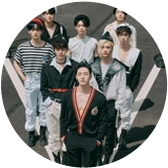
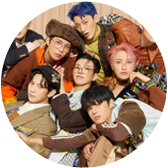
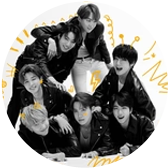
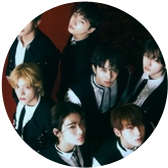
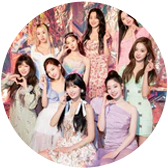
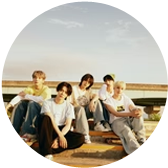
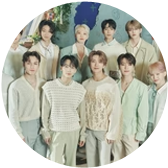
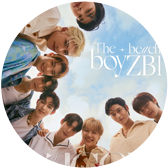







 Established by Yang Hyun-suk in 1996, YG Entertainment initially focused on hip-hop and R&B. The agency's first major success came with the boy group Jinusean
Established by Yang Hyun-suk in 1996, YG Entertainment initially focused on hip-hop and R&B. The agency's first major success came with the boy group Jinusean


